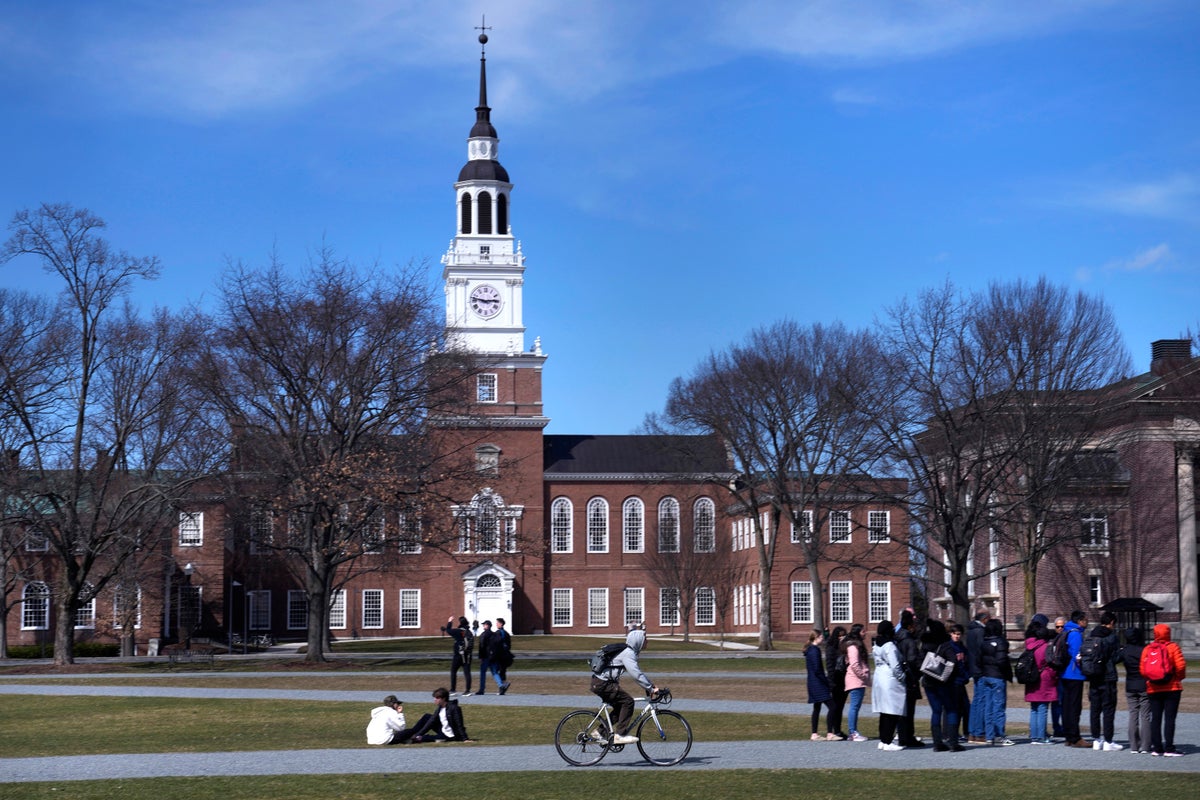
EDITORS/NEWS DIRECTORS:
A growing number of institutions are facing pressure to return Native American remains and other culturally significant items to tribes. The debate is also putting a spotlight on the large numbers of remains and artifacts that some prominent institutions have in their possession and the slow pace of returning them.
The Native American Graves Protection and Repatriation Act (NAGPRA) requires federally funded institutions, such as universities, to return remains and cultural items. In February, Cornell University returned ancestral remains to the Oneida Indian Nation that were inadvertently dug up in 1964 and stored for decades in a school archive. Colgate University in November returned to the Oneidas more than 1,500 items once buried with ancestral remains, some dating back 400 years.
___
READ AP’S STORY
Native American remains discovered at Dartmouth College prompt calls for accountability
___
SEE THE DATA
A great place to start for any story on Native American remains and artifacts is the data maintained by the National Park Service. Institutions and federal agencies in every state receiving federal funding must document any Native American human remains and associated funerary objects in their collections. The data can be filtered to look at specific institutions and agencies or a specific geographic origin of the human remains, among other things. From here, you will need to contact the listed institution to find out more about their collections.
Some 884,000 Native American artifacts — including nearly 102,000 human remains — that should be returned to tribes under federal law are still in the possession of colleges, museums and other institutions across the country.
___
EXPAND ON THE DATA
Once you have confirmed that an institution in your coverage area has Native American remains or cultural objects, reach out to hear their story. Get details from the institution on the history of those holdings and how they plan to repatriate them. Visit the institution to see the collection first hand and talk to experts at the institution about artifacts. If they have determined the tribal affiliation of those remains or funerary objects, contact tribal leaders to hear their perspective on the process and plans for a potential return. Find out if there have been any delays or other hurdles in the repatriation process.
___
TALK TO THE EXPERTS
As part of any story on Native American remains, reporters should talk to experts about the NAGPRA process and concerns that some institutions have been slow to return artifacts. The National Park Service can provide a good overview on the numbers and provide a list of institutions with the most Native American remains and objects. Other experts can weigh in about the process and importance of repatriation. Among them is Shannon O’Loughlin, chief executive of the Association on American Indian Affairs, a national group that assists tribes with repatriations. Another expert is Wendy Teeter, head curator of archaeology at the UCLA Fowler Museum.
___
CONSIDER THESE QUESTIONS
— When talking to an institution, ask how they acquired the objects and how they were documented. Ask them how long they've had them, how they identified them and what plans they have in place to repatriate the artifacts. And if they don't know the tribal affiliation of the artifacts, ask what they are doing to make that determination and what tribes they are consulting with.
— When talking with tribes, ask them about the NAGPRA process and some of the hurdles they face in getting remains or artifacts. Do they have enough resources to locate remains or objects and, if so, what has their experience been in working with federally-funded institutions where they are housed. How have they handled the return of remains? What has it meant to tribal members to have them returned?
— Reach out to lawmakers and tribal experts to talk about the NAGPRA process. What did the landscape look like before NAGPRA and what inspired the law? What has changed since the law was enacted and what needs to be done to make the law more effective? What changes are coming to the law to address concerns that too many institutions have yet to comply with NAGPRA?
___
ADDITIONAL AP COVERAGE
Wounded Knee artifacts highlight slow pace of repatriations
7,100 Native American remains could be laid to rest in Ohio
Cornell Univ. returns Native American remains dug up in 1964







